Shabbat
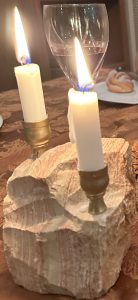
Shabbat is a weekly celebration which begins just before sunset on Friday and continues until just after sunset on Saturday. Traditionally, shabbat starts with a ceremony called Kabbalat Shabbat every Friday. The Varsano family typically gathers for a large festive meal on Friday night. Before the meal begins, two Shabbat candles are lit and a blessing is recited, usually sung. Followed by the blessing over over the wine and the sanctification of Shabbat., known as Kiddush. The eating begins with the blessing of the bread (usually an egg challah), known as Hamotzi. Shabbat is a time of joy and celebration, often accompanied by singing and dancing.
Saturday is a day of relaxation and time off from the usual work routine. Shabbat is a day for spiritual exploration. Traditionally, our family spends Shabbat both at home and in the synagogue. In the synagogue on Saturday morning, the Torah is read. Shabbat ends with a special ceremony called Havdalah.
Shabbat Food
Under strict religious observation, cooking on Shabbat is not allowed, so slow-cooked foods were popular because it would simmer on a low flame overnight and be ready for eating the next day. Lot’s of those traditional foods are still cooked today even if we don’t observe the rules of the Sabbath as closely as we once did.
Popular Shabbat dishes include bourekas, bulemas, pestelas, sambusak, ropa vieja, chamin, and shavfka (similar to Askenazi kugel). Recipes and Varsano Variations are listed here.
Rosh Hashana
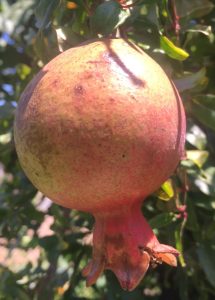
Rosh HaShanah is the Jewish New Year, a time of prayer, self-reflection, and . We review our actions during the past year, and we look for ways to improve ourselves, our communities, and our world in the year to come. The holiday marks the beginning of a 10-day period, known as the Yamim Nora-im (“Days of Awe” or “High Holidays”). Rosh HaShanah is widely observed by Jews throughout the world, often with prayer and reflection in a synagogue. There also are several holiday rituals observed at home.
Rosh HaShanah is celebrated on the first day of the Hebrew month of , which corresponds to September or October. Customs associated with the holiday include sounding the , eating a round , and tasting apples and honey to represent a sweet New Year.
At the beginning of the evening meals of Rosh Hashana, it is traditional to eat foods symbolic of a good year and to recite a short prayer beginning with the Hebrew words yehi ratson (“May it be Your will”) over each one, with the name of the food in Hebrew or Aramaic often presenting a play on words. The foods eaten at this time have thus become known as yehi ratsones.
Typical foods, often served on a large platter called a yehi ratson platter, include:
- Apples dipped in honey, or baked or sometimes in the form of a compote called mansanada
- Dates
- Pomegranates, or black-eyed peas
- Pumpkin, in the form of savory pumpkin-filled pastries called rodanchas
- Leeks, in the form of fritters called keftedes de prasa
- Beets, usually peeled and baked
- Head of a fish, usually a fish course with a whole fish, head intact
It is also common to symbolize a year filled with blessings by eating foods with stuffing on Rosh Hashana such as a stuffed, roasted bird or a variety of stuffed vegetables called legumbres yaprakes.
Yom Kippur
Yom Kippur means “Day of Atonement” and refers to the annual Jewish observance of fasting, prayer, and repentance. Yom Kippur is considered the holiest day on the Jewish calendar and occurs 10 days after Rosh Hashanah. Children are not required to fast, but it is customary in the Varsano family to start fasting on Yom Kippur at age twelve.
Customs for the first food eaten after the Yom Kippur fast differ. Turkish and Greek Jews sip a sweet drink made from melon seeds
Hanukkah
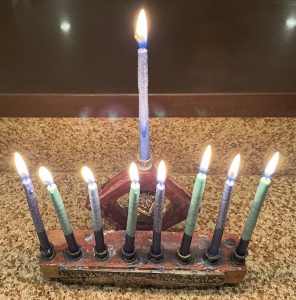
Hanukkah is a festive eight-day celebration usually in December. Hanukkah, meaning “dedication” in Hebrew, commemorates the victory of a small group of Jewish rebels (led by Judah Maccabee and his brothers, collectively known as “the ”) over the armies of Syria in 165 B.C.E. and the subsequent liberation and “rededication” of the Temple in Jerusalem. Sometimes called the Festival of Lights, we celebrate with candles, food, family, and friends.
Modern celebrations of Hanukkah focus on family and friends and include the lighting of the Hanukkah (also called a ); singing and playing special songs and games (); and eating foods prepared in oil including , , bimuelos (fried dough puffs) and keftes de prasas (leek patties).
Sephardic Hanukkah dishes include cassola (sweet cheese pancakes), bimuelos (puffed fritters with an orange glaze), keftes de espinaka (spinach patties), keftes de prasa (leek patties) and shamlias (fried pastry frills).
Purim
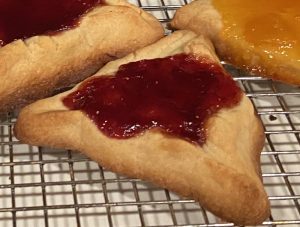
Purim is a joyous holiday that affirms and celebrates Jewish survival and continuity throughout history. The main communal celebration involves a public reading—usually in the synagogue—of the Book of Esther (M’gillat Esther), which tells the story of the holiday: Under the rule of King Ahashverosh, Haman, the king’s adviser, plots to exterminate all of the Jews of Persia. His plan is foiled by Queen Esther and her cousin Mordechai, who ultimately save the Jews of Persia from destruction. The reading of the typically is a rowdy affair, punctuated by booing and noise-making when Haman’s name is read aloud.
Purim is an unusual holiday in many respects. First, Esther is the only biblical book in which God is not mentioned. Second, Purim, like Hanukkah, is viewed as a minor festival according to Jewish custom, but has been elevated to a major holiday as a result of the Jewish historical experience. Over the centuries, Haman has come to symbolize every anti-Semite in every land where Jews were oppressed. The significance of Purim lies not so much in how it began, but in what it has become: a thankful and joyous affirmation of Jewish survival.
Hamantaschen (Yiddish for “Haman’s pockets”) are the most famous Purim food. These triangular cookies are often filled with poppy seed, chocolate, jelly or other sweet flavors. Known as oznei haman (Haman’s ears) in Hebrew, hamantaschen are commonly included in mishloach manot or served as a snack at Purim parties. Playing off the pun, it was said that the cookies stuffed with seeds represented Haman’s pockets stuffed with bribes.
Caveos di Aman, or Haman’s hair is a Bulgarian recipe of long noodles, such as spaghetti or vermicelli. The noodles are dressed in a lemon and olive oil vinaigrette, tossed with olives, and garnished with hard boiled eggs.
Folares is a Purim bread, enjoyed by Rhodian Jews. It’s meant to symbolize Haman’s head. Its dough is wrapped around a hard-boiled egg.
Italian Jews eat vegetable pastry turnover called Buricche. It symbolizes the vegan diet Esther kept in the palace, enabling her to hide her Jewish identity. The linked recipe is a reimagined sweet, festive pastry inspired by the Italian tradition.
Ojos de Haman (Haman’s eyes) are prepared by Moroccan Jews. These are rolls baked with almonds and topped with two hard-boiled eggs. One of the men at the table plucks out the egg, symbolizing the destruction of Haman.
Moroccans also made sweets platters featuring chebakia and sweet almond cigars, aka “Haman’s fingers.”
Passover
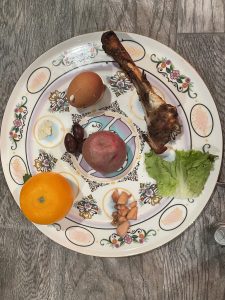
The holiday of Passover (Pesach in Hebrew) is perhaps one of the most central to Jewish life and history. More widely observed than any other holiday, Passover celebrates the biblical account of the Israelites’ redemption and escape from 400 years of Egyptian slavery. Holiday rituals include a dramatic retelling of the Exodus story and many unique food traditions. We come together with friends and family to celebrate the great lessons of the story: the blessing of freedom and the reminder that since we were once slaves and were freed, it is our responsibility to work for freedom for all people, everywhere.
The word “Passover” is derived from the Hebrew word pasach, which means “passed over,” referring to the 10th plague that killed the Egyptian firstborn, but miraculously “passed over” the houses of the Israelites (more on that below).
On April 17 and 18, 1916, the Varsano Restaurant in Salonica, Greece hosted a Passover Seder for Jewish soldiers in WWI. According to an article published in the French newspaper La Liberté, “The Chief Rabbi of Salonika has the honor to invite all the Israelite officers and soldiers of the Franco-English armies located in Macedonia to kindly attend the Seder service as well as the dinner which will be organized in their honor during the first two evenings and the first two days of Passover.” The Varsano Restaurant was “rented for this purpose by the Israelite community. The two sections of the Talmud Thora school will be open on Monday, the day before. will be able to sleep there in the event that they have obtained permission to pass the night in town.”
Food
Sephardi and Ashkenazi cooking differs substantially on Passover due to rabbinic rulings that allow the consumption of kitniyot, a category which is forbidden to Ashkenazi Jews. Sephardi Jews prepare charoset, one of the symbolic foods eaten at the Passover seder, from different ingredients. Whereas charoset in Ashkenazi homes is a blend of chopped apples and nuts spiced with wine and cinnamon, Sephardi charoset is based on raisins or dates and is generally much thicker in consistency.
Mina (known as scacchi in Italy) is a Passover meat or vegetable pie made with a matzo crust.
Other Holidays and Rituals
The Jewish Calendar is filled with holidays and rituals, but many modern Jews do not observe or celebrate all of the traditions. In the old country, the Varsano Family was likely orthodox, kosher, and strictly adhered to Sephardic customs. Some of the other important Jewish holidays include Sukkot, Sh’mini Atzeret and Simchat Torah, Tu BiShvat, Lag BaOmer, Shavuot, and Tishah B’Av. For many years it has been customary for a 13 year old boy to have a Bar Mitzvah ceremony which is a rite of passage to young adulthood. The receptions have become increasingly more extravagant in modern times. In the mid the 20th Century, girls of the same age starting having Bat Mitzvah ceremonies.
Judaism is filled with holidays, observances, prayers, customs, and traditions. By no means is this a complete list, it’s just meant to highlight some of the weekly and seasonal rituals of the Varsano family. Please share any rituals that you would like to add to this page.